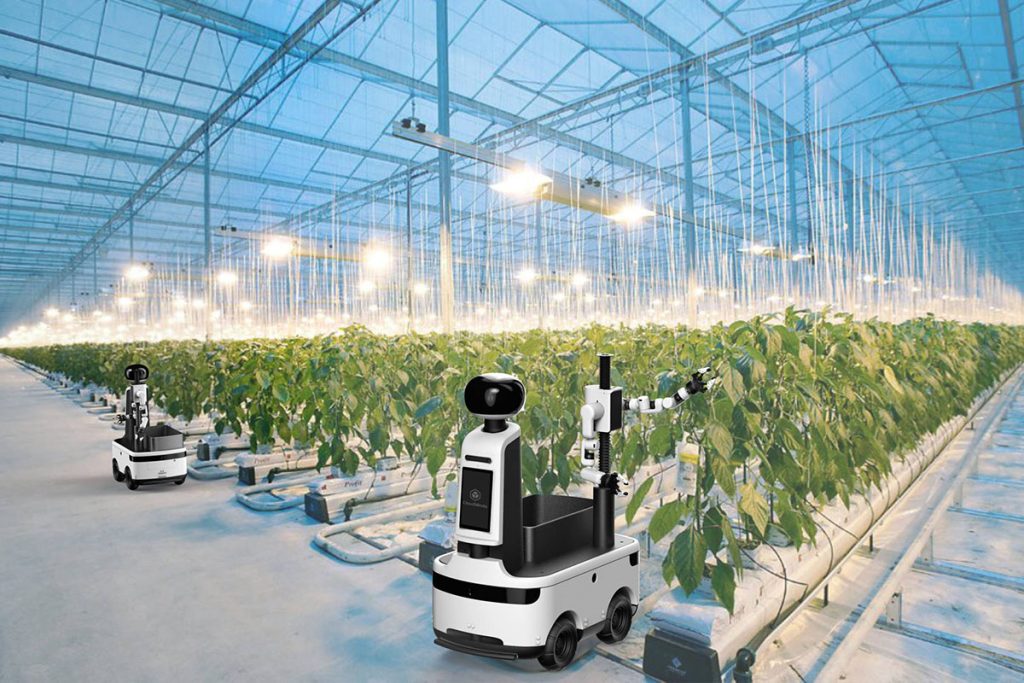Driven by modern technology, facilitiesagricultureIs experiencing unprecedented changes, and intelligent greenhouse is undoubtedly the bright pearl in this change. It is gradually replacing traditional greenhouses by virtue of advanced environmental control systems and intelligent management methods, and becoming an important force to improve crop yield, optimize the growing environment and reduce resource consumption. In this paper, we will explore the world of intelligent greenhouse, reveal the significant differences between it and traditional greenhouses, and look forward to its broad application prospects.
I. Basic concepts of intelligent greenhouse
Smart greenhouses arefacility-based agricultureThe advanced type of greenhouse has an integrated environmental control system, which can directly regulate the indoor temperature, light, moisture, fertilizer, gas and other key factors. Through the Internet of Things, big data, artificial intelligence and other advanced technologies, the smart greenhouse can realize accurate monitoring and automatic adjustment of the greenhouse internal environment. This modernized agricultural production facilities can not only simulate the optimal environment for crop growth, but also according to the crop growth
Intelligent management of the growth stage and external environmental changes to improve crop quality, shorten the growth cycle and save resources. The control system of an intelligent greenhouse usually consists of three major parts: signal acquisition system, central computer and control system. The signal acquisition system is responsible for collecting environmental data in the greenhouse, such as temperature, humidity, light intensity, carbon dioxide concentration, etc.; the central computer processes and analyzes these data and generates corresponding control instructions; the control system automatically adjusts the environmental conditions in the greenhouse according to the instructions, such as opening and closing of sunshade nets, operation of ventilation equipment, and precise control of irrigation and fertilization.
Second, the intelligent greenhouse and the traditional greenhouse greenhouse comparison
Environmental control capabilities
The traditional greenhouse is one of the simplest agricultural facilities, which is usually built from film, earth walls, bamboo and wood structures. Due to its low cost and low level of technology, it is widely used in many regions of China. However, traditional greenhouses have weak environmental control and rely mainly on the personal experience of growers for vegetable cultivation. For example, the temperature and humidity in the greenhouse are adjusted by manually opening the insulation quilt and switching on and off the vents, etc., but this approach
Inefficient and difficult to control accurately.
In contrast, the smart greenhouse has a strong environmental control capability. It uses sensors, Internet of Things management system, water and fertilizer integration system, soilless culture, biological control and other technical means for greenhouse management. Through real-time monitoring of environmental parameters, and combined with an intelligent control system to automatically adjust the environmental conditions in the greenhouse, it realizes the refinement of the environment and intelligent cultivation. This ability enables the intelligent greenhouse to produce high yields and steadily fine vegetables throughout the year,
Flowers and other agricultural products with significant economic benefits.
Resource efficiency
Traditional greenhouse greenhouses tend to be planted in a sloppy manner, with most of the irrigation and fertilization relying on manual judgment. Due to the lack of scientific data support, water and energy are not effectively utilized, which is easy to waste resources. At the same time, due to the limitations of artificial judgment, the water and fertilizer required for crop growth is often difficult to get accurate supply, affecting crop quality and yield. In contrast, smart greenhouses precisely supply water according to crop water demand through intelligent irrigation systems; comprehensively utilize industrial waste heat and carbon dioxide to provide heating and carbon dioxide supplementation for crops; and at the same time optimize the use of energy by combining intelligent algorithms. These measures significantly enhance resource utilization efficiency, reduce production costs and improve the quality and yield of agricultural products.
pest control
Traditional greenhouses are particularly dependent on pesticides and chemical fertilizers, and are highly susceptible to environmental pollution and pesticide residue problems in the process of pest control. This not only affects the quality and safety of agricultural products, but also poses a potential threat to human health and the ecological environment. The intelligent greenhouse adopts the combination of biological control, physical control and intelligent early warning system to control pests and diseases. Through real-time monitoring of crop growth status and environmental conditions, timely detection and treatment of pests and diseases; at the same time, reduce the use of chemical pesticides to ensure the safety of agricultural products. This scientific means of pest control not only improves crop yield and quality, but also reduces environmental pollution and pesticide residue problems.
III. Prospects for the application of intelligent greenhouses
With the continuous progress of science and technology and the increasing global demand for sustainable agriculture, the application of intelligent greenhouse is promising. It is not only suitable for largemodern agricultureindustrial park, providing efficient, environmentally friendly and intelligent solutions for agricultural production; it is also suitable for urban agriculture, home gardening and other fields, providing green and healthy agricultural products and leisure space for urban residents. The emergence of intelligent greenhouse marks the progress of agricultural production in the direction of more efficient, environmentally friendly and intelligent. It provides strong technical support for the realization of agricultural modernization and rural revitalization strategy. In the future, with the continuous development and improvement of technology, the smart greenhouse will become one of the mainstream modes of agricultural production, bringing safer, healthier and more delicious food to the human table.
concluding remarks
Intelligent greenhouse, as a magnificent transformation of the traditional greenhouse, is leading the development trend of future agriculture with its powerful environmental control capability, efficient resource utilization efficiency, scientific pest control means and advanced automation and intelligence level. We have reason to believe that in the near future, the intelligent greenhouse will become one of the mainstream modes of agricultural production, contributing to the sustainable development of mankind and a better life.

